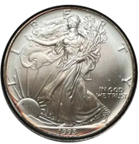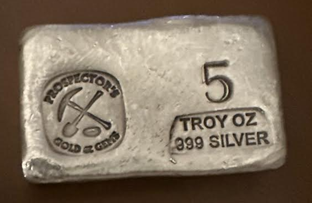Entering the Mysterious World of Bullion

My friends and I attended our 1st coin show earlier this year and our attention was caught by a shiny display of silver bars stacked on a table. We expected coins at the show but had never seen small silver bars for sale before. The dealer behind the table, looking a little like a prospector from years gone by, educated us about the Spot Price of silver and how these 5 oz. bars were only a few dollars over spot. We were intrigued. These bars were beautiful – rustic and raw – and seemed like they had a story to tell. We looked through the pile of bars that had different designs stamped on them and then asked why identical ones in his case were more expensive. He told us the ones in the case were in better condition, missing out on an opportunity to sell us accessories – cases, holders or tiny designer bags. Our next question to ourselves was – how do we know these are real? We checked in with our friend that is a coin dealer at the show, and he assured us that they were real.
We pooled our money and bought 2 on the spot (well technically slightly over). We had a lot of terms thrown at us that morning and we wanted to learn more. Here are the basics we gathered:
Spot Price: Is the going rate for a single ounce of the metal for immediate delivery. You can look this up and see live prices by searching for “gold and silver spot price”.
Bullion: It is not dehydrated soup broth, it is actually what we just purchased – physical gold and silver of high purity, often held as coins, bars or ingots.
Coins, Rounds & Bars: Bullion coins are produced by government mints (or private mints on behalf of sovereign states) and are legal tender – like the One Dollar American Silver Eagle:

Bullion rounds are coin shaped and can be privately produced like this example:

Bullion bars are minted or cast. This is an example of a minted bar:

and we had purchased a cast bar:

Ingots: Different than bars, because they are usually less refined – think of them as a blank slate prior to being made into a bar or coin. However, some people use silver bars and silver ingots interchangeably.
Purity: Measures the level of impurities in the metal. For silver, the highest purity is 99.99% or .9999. For gold, 24 karat is 100% pure.
Troy Ounce: System of weights used for precious metals. A troy ounce is a little heavier than an ounce (it weighs about 2.75 grams more)
Vintage vs. Modern: While there doesn’t seem to be an agreed upon standard, vintage bars are typically at least 40 years old. Modern bars are less than 40 years old.
An impulse buy at a coin show has opened a whole new exciting world of precious metal collecting for us that has both an historical and artsy side as well as an investment side. What’s next for us – we are looking for answers to some new questions we have:
- how will we store the bars (we want to be in the case, not on the table)
- when we are buying, how do we guarantee that they are real
- where do we find a reputable, reliable source for researching bullion
- looking down the road, how do we sell them
While I search for these answers, I find myself hunting for new bars online and continuing to educate myself while I wait for the next coin show to go shopping!
Copyright 8.9.2024 Vintage & Modern Bullion Authentication Cos. LLC
